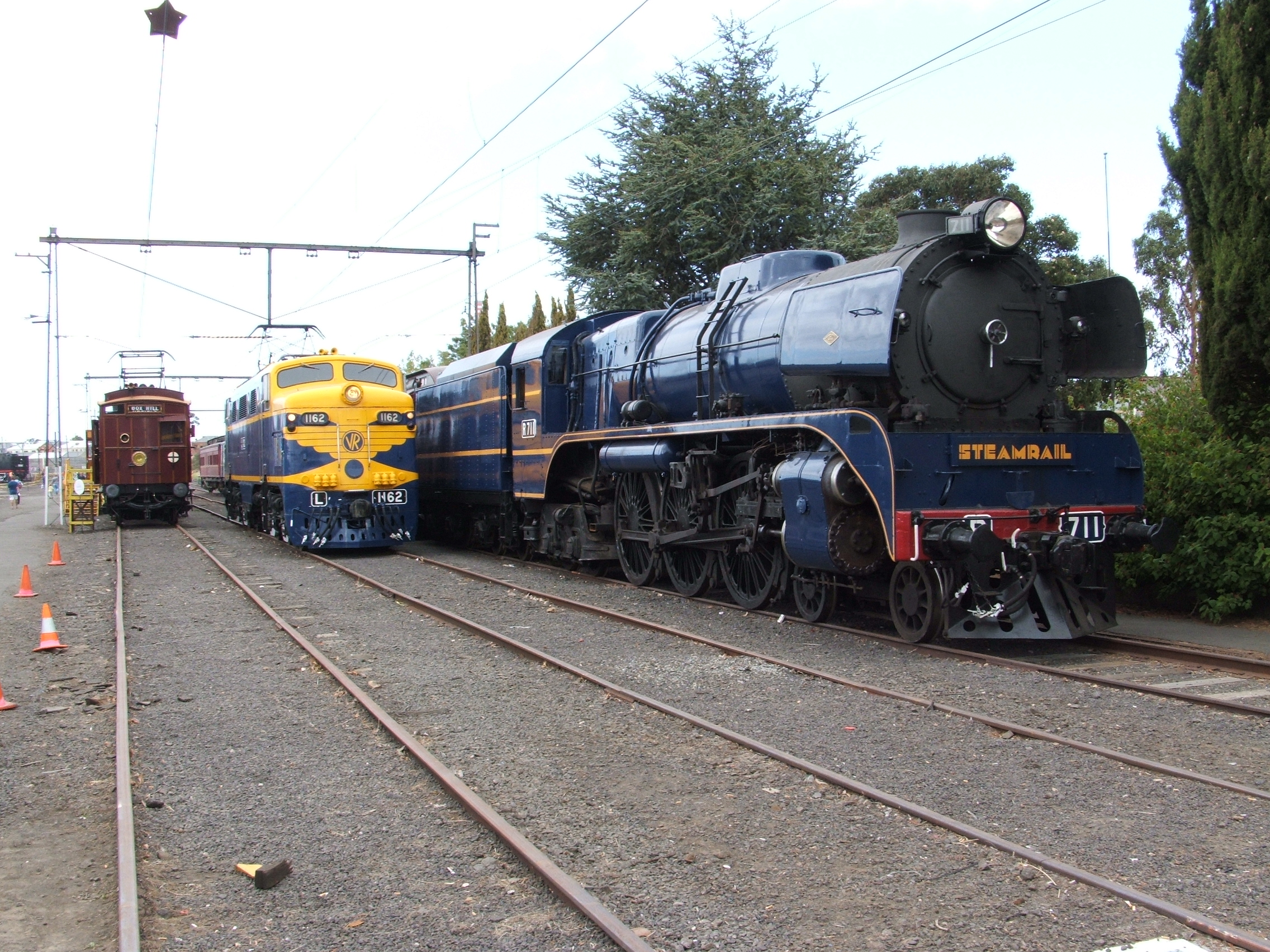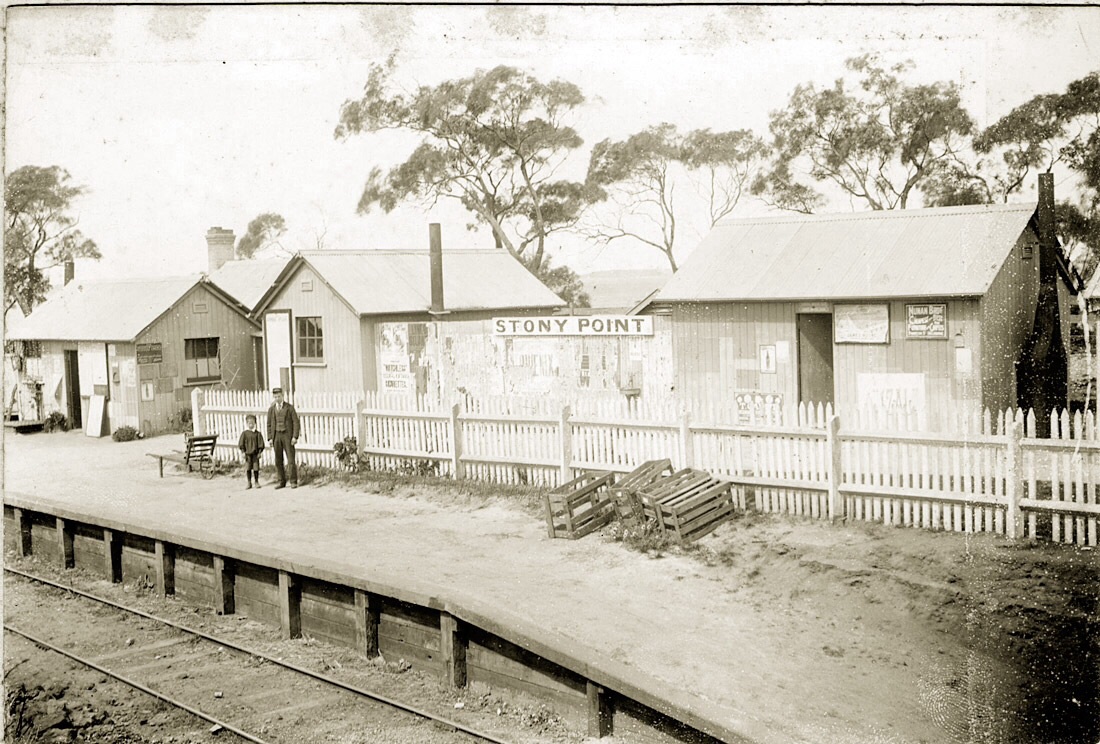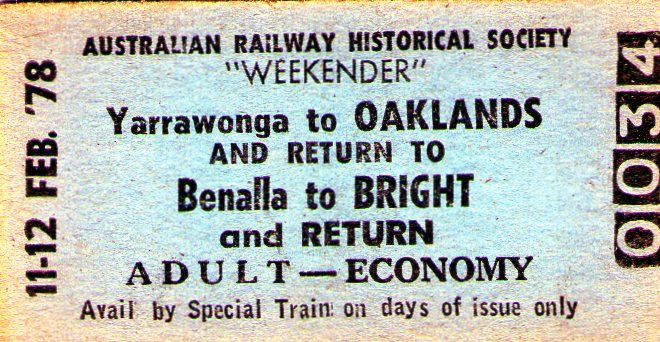|
Diesel Electric Railmotor (VR)
The Diesel Electric Rail Motor (DERM) is a type of railmotor operated by the Victorian Railways in Australia. History Originally built as a petrol-electric, petrol electric rail motor (PERM), they were the longest-lived rail motor on the Victorian Railways, with the first entering service in 1928 and the last being withdrawn in 1991. The rail motor, also known as the railcar, was a standard product of the US Electro-Motive Corporation (a predecessor of Electro-Motive Diesel) and built between 1924 and 1932, albeit to a smaller loading gauge and wider track gauge. The first was imported in 1927, assembled at Newport Workshops, and placed in service in 1928. The bodies of the remaining nine were constructed at Newport Workshops using imported equipment and electrical components, and placed in service between 1930 and 1931. The rail motors were initially powered by a Winton Motor Carriage Company petrol engine. When those wore out in the early 1950s, they were replaced with ... [...More Info...] [...Related Items...] OR: [Wikipedia] [Google] [Baidu] |
Newport Workshops
The Newport Railway Workshops is a facility in the Melbourne suburb of Newport, Victoria, Newport, Australia, that builds, maintains and refurbishes Rolling stock, railway rollingstock. It is located between the Williamstown railway line, Williamstown and Werribee railway lines. History Plans for a workshop at Newport started in the 1860s, to replace the temporary Williamstown Workshops but nothing came of it. It was not until 1880 that work began, when the Victorian Railways purchased annexes used at the Melbourne International Exhibition (1880), 1880 Melbourne Exhibition and erected one of them at Newport, naming it the Newport Carriage Workshops when it began operation in 1882. Construction of the permanent workshops commenced in 1884, and was completed in 1889. Although the earlier carriage workshop closed at this time, it reopened in 1895 to manufacture signal equipment. The first Railroad car, carriages built by the workshops were completed in 1889, but early locomotives w ... [...More Info...] [...Related Items...] OR: [Wikipedia] [Google] [Baidu] |
Track Gauge
In rail transport, track gauge is the distance between the two rails of a railway track. All vehicles on a rail network must have Wheelset (rail transport), wheelsets that are compatible with the track gauge. Since many different track gauges exist worldwide, gauge differences often present a barrier to wider operation on railway networks. The term derives from the metal bar, or gauge, that is used to ensure the distance between the rails is correct. Railways also deploy two other gauges to ensure compliance with a required standard. A ''loading gauge'' is a two-dimensional profile that encompasses a cross-section of the track, a rail vehicle and a maximum-sized load: all rail vehicles and their loads must be contained in the corresponding envelope. A ''structure gauge'' specifies the outline into which structures (bridges, platforms, lineside equipment etc.) must not encroach. Uses of the term The most common use of the term "track gauge" refers to the transverse distance be ... [...More Info...] [...Related Items...] OR: [Wikipedia] [Google] [Baidu] |
Mornington Railway
The Mornington Tourist Railway is a heritage railway near Mornington, Victoria, Mornington, a town on the Mornington Peninsula, near Melbourne, Victoria. The line is managed by the Mornington Railway Preservation Society and operates on part of the former Victorian Railways branch line which ran from Baxter to Mornington. History The Mornington railway line was a rural railway branching from the Stony Point railway line at Baxter. The line operated for 92 years before closing. Ten years later, the line was reopened as a heritage railway. *1888—In August the contract for building the line was given to David Munro for £25,000. A short branch line was built to Moorooduc Quarry Flora and Fauna Reserve, Moorooduc quarry to transport stone for track ballast, ballasting the line. *1889—Baxter to Mornington railway line opened on 10 September. *1942—Passenger service ceased. *1966— Passenger service reinstated. *1981—The line was closed. *1984—The Mornington Railway P ... [...More Info...] [...Related Items...] OR: [Wikipedia] [Google] [Baidu] |
Ballarat
Ballarat ( ) () is a city in the Central Highlands of Victoria, Australia. At the 2021 census, Ballarat had a population of 111,973, making it the third-largest urban inland city in Australia and the third-largest city in Victoria. Within months of Victoria separating from the colony of New South Wales in 1851, gold was discovered near Ballarat, sparking the Victorian gold rush. Ballarat subsequently became a thriving boomtown that for a time rivalled Melbourne, the capital of Victoria, in terms of wealth and cultural influence. In 1854, following a period of civil disobedience in Ballarat over gold licenses, local miners launched an armed uprising against government forces. Known as the Eureka Rebellion, it led to the introduction of white male suffrage in Australia, and as such is interpreted as the origin of Australian democracy. The rebellion's symbol, the Eureka Flag, has become a national symbol. Proclaimed a city on 9 September 1870, Ballarat's prosperity, unlik ... [...More Info...] [...Related Items...] OR: [Wikipedia] [Google] [Baidu] |
Steamrail Victoria
Steamrail Victoria is a not-for-profit volunteer group established in 1965 to restore and operate historic locomotives and rolling stock used on the Rail transport in Victoria, railways in Victoria, Australia. The main depot of the group is at the Newport Workshops ('West Block') in suburban Melbourne. In addition to operating railfan special trains and charters for private groups, the group also operates special steam trains in the Melbourne suburban area. Steamrail regularly tours the state, including participation in annual events such as the Ballarat Heritage Weekend (steam locomotive Y112 is used to shuttle between Ballarat and Sulky Gully/Lal Lal). Steamrail Victoria also leases diesel locomotives to freight operators such as Southern Shorthaul Railroad, Southern Shorthaul Railroad (SSR) & Qube Logistics as required. Locomotives were also hired to El Zorro (railway), El Zorro until they ceased trading. The group has custody of a number of Victorian Railways steam locomot ... [...More Info...] [...Related Items...] OR: [Wikipedia] [Google] [Baidu] |
South Gippsland Railway
The South Gippsland Railway was a Heritage railway, tourist railway located in South Gippsland, Victoria (Australia), Victoria, Australia. It controlled a section of the former South Gippsland railway line between Nyora, Victoria, Nyora and Leongatha, Victoria, Leongatha, and operated services from Leongatha to Nyora, Victoria, Nyora, via Korumburra, the journey taking about 65 minutes. History The South Gippsland line (also known as the ''Great Southern Railway'') was opened from Dandenong railway station, Dandenong to Cranbourne railway station, Cranbourne in 1888 and extended to Koo Wee Rup, Victoria, Koo Wee Rup, Nyora, Victoria, Nyora and Loch, Victoria, Loch in 1890, Korumburra, Victoria, Korumburra and Leongatha, Victoria, Leongatha in 1891. The line had numerous branches which included: the Strzelecki railway line, Strzelecki Line; branching from Koo Wee Rup, the Wonthaggi railway line, Wonthaggi Line; branching from Nyora, the Coal Creek, Austral Coal and Outtrim rai ... [...More Info...] [...Related Items...] OR: [Wikipedia] [Google] [Baidu] |
Yarra Valley Railway
The Yarra Valley Railway is a heritage railway operating on a section of the former Healesville railway line, Healesville railway which operated between Lilydale, Victoria, Lilydale and Healesville, Victoria, Healesville in the Yarra Valley area northeast of Melbourne, Australia. History The Lilydale-Melbourne railway was extended from Lilydale to Yarra Flats (now known as Yarra Glen, Victoria, Yarra Glen) on the 15 May 1888 with intermediate stations at Coldstream, Victoria, Coldstream and Yering, Victoria, Yering. Part of the structure included a long timber viaduct with 502 openings near Yarra Glen, spanning the Yarra River and the adjacent flood plains. The extension of the line from Yarra Glen to Healesville required a 1 in 40 (2.5%) climb into a 154.4 metre tunnel with a corresponding descent at nearly the same grade. The Healesville Station opened on 1 March 1889 with an intermediate station at Tarrawarra. Traffic on the line included timber, livestock, milk and dairy ... [...More Info...] [...Related Items...] OR: [Wikipedia] [Google] [Baidu] |
VicTrack
VicTrack, the trading name of the Victorian Rail Track Corporation, is a business enterprise of the Victorian Government which owns all railway and tram lines, associated rail lands, track corridors and other infrastructure in the state of Victoria, Australia, with the exception of the Puffing Billy Railway, which is owned and run by the Puffing Billy Railway Board. VicTrack leases railway and tram land used for public transport to Public Transport Victoria which then sub-leases the assets and infrastructure to rail and tram operators, currently Australian Rail Track Corporation (ARTC), Metro Trains Melbourne, V/Line and Yarra Trams. VicTrack retains responsibility for the freight lines around the Dynon Intermodal Freight Terminal, South Dynon Locomotive Depot and in North Melbourne. VicTrack also carries out a range of commercial activities on railway land, including: * property leasing and licensing of surplus railway land * providing telecommunications services using surp ... [...More Info...] [...Related Items...] OR: [Wikipedia] [Google] [Baidu] |
Stony Point Railway Line
The Stony Point line is a commuter railway line in the outer metropolitan area of Melbourne, Victoria, Australia. Operated by Metro Trains Melbourne, it is the only diesel service on the metropolitan network and, at , is the tenth-longest line. It is an extension of the Frankston railway line, Frankston line, with services running from Frankston station to Stony Point, serving 10 stations in all. The line is also used for freight services to the Port of Hastings Development Authority, Port of Hastings. The line was opened in three sections during 1888 and 1889. Only two stations have been added since its completion—Leawarra railway station, Leawarra and Morradoo railway station, Morradoo. In recent years, there have been proposals to extend the electrified Frankston line to Baxter railway station, Baxter. History 19th century The Stony Point line was initially opened from Frankston to Baxter railway station, Baxter station, with services commencing in 1888. Extension ... [...More Info...] [...Related Items...] OR: [Wikipedia] [Google] [Baidu] |
Mornington Railway Line
The Mornington railway line, in Melbourne, Australia, was a rural railway branching off from the Stony Point railway line at Baxter. The line had a life of 92 years, opening in 1889, and closing in 1981. History Early history In 1881, a line branching from the Gippsland railway line at Caulfield was opened to Mordialloc. It was extended to Frankston in 1882 and Baxter in 1888. From there branches were constructed to Hastings and Mornington. The Baxter to Mornington line was officially opened on 10 September 1889. In 1922, the Frankston line was electrified in two stages: first to Mordialloc in June and thence to Frankston by August. When opened, the Mornington line had two stations: the terminus at Mornington and an intermediate station Moorooduc. In 1925, there was local agitation to extend electrification from Frankston railway station to Mornington, which was rejected as being unprofitable Between 1920 and 1930, Rail Motor Stopping Place (RMSP) 16 was situated at ... [...More Info...] [...Related Items...] OR: [Wikipedia] [Google] [Baidu] |
Oaklands Railway Line, Victoria
The Oaklands railway line is a freight-only railway line in north-eastern Victoria (Australia), Victoria, Australia. The line branches from the main North East railway line, North East railway at Benalla railway station, Benalla station and runs across the Victoria-New South Wales border to the town of Oaklands, New South Wales. History The first section of line opened in 1883 as a branch line to St James, Victoria, St James, at the same time as the extension of the North East railway line, main line to Albury railway station, Albury in New South Wales. In 1886, the line was extended another to Yarrawonga, on the southern bank of the Murray River, which formed the colonial and, later, the state boundary between Victoria (Australia), Victoria and New South Wales. Under the 1922 Border Railways Act, the line was extended another 61 kilometres to Oaklands, New South Wales, where it met the existing Oaklands railway line, New South Wales, New South Wales branch line, and Oakla ... [...More Info...] [...Related Items...] OR: [Wikipedia] [Google] [Baidu] |
Victorian Railways Z Type Carriage
The Z type carriages are an air conditioned steel passenger carriage used on the railways of Victoria, Australia. The carriages were constructed by the Victorian Railways from 1957 for use on interstate services. Two major types of carriage were constructed - thirteen AZ first class cars with closely spaced but smaller windows, and twelve BZ second class cars with wider spaced but larger windows (the thirteenth BZ entered service on standard gauge). Carriages were provided with a saloon layout, with 2+2 reversible seating provided, with each row lining up with the windows. First class was provided with more legroom than second. An internal partition existed between the two ends of the saloon, but was removed in later years. A single twinette sleeping car was also built in a Z type body shell, entering service in 1963; it had 20 berths. A number of carriages were placed onto standard gauge bogies from 1962 for use on interstate trains such as the ''Spirit of Progress''. With th ... [...More Info...] [...Related Items...] OR: [Wikipedia] [Google] [Baidu] |











